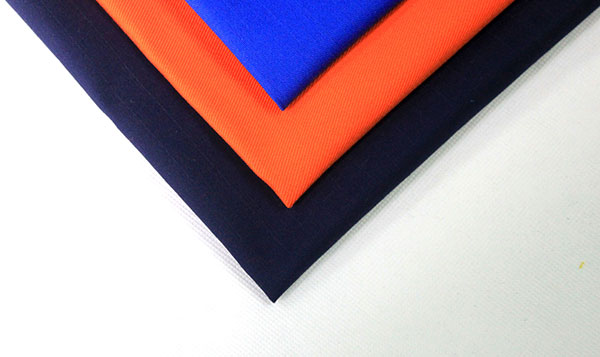


When it comes to flame retardant, some people may think of high temperature resistant materials, so what is the difference between the two?
The difference between flame retardant and high temperature resistance
In simple terms, high temperature resistant materials can still maintain their original properties under high temperature conditions, such as abrasion resistance, sealing and so on. That is to say, under high temperature conditions, its chemical properties basically do not change, and at the same time try to ensure that the physical properties do not change.
Flame retardant materials usually have the characteristics of non-combustion in the case of flames, or difficult to burn, and quickly extinguish after leaving the flame, such as certain polymer materials containing bromine and phosphorus elements, which can absorb free radicals generated by combustion during combustion , Hinder the progress of the chain reaction.
Is the flame retardant cloth unburnable?
In fact, flame retardant cloth is not burnt, it is the performance of the fabric after processing, can prevent the flame from spreading, and automatically extinguish the performance within a certain period of time.
Therefore, the flame retardancy of a fabric is usually judged from the burning rate, burning time (lasting time and smoldering time) of the fabric, and the length of the damage. That is, the shorter the flame burning and flameless burning time, the more damaged it is. The lower the flame retardancy of the fabric, the lower the flame retardancy of the fabric.
Related terms
Afterflame time: Under the specified test conditions, the material continues to burn with flame after the ignition source is removed.
Smoldering time: Under the specified test conditions, after the flameless combustion is terminated, or the flameless burner, the material continues to flamelessly after the ignition source is removed.
Damage length: the maximum length of the damaged part of the material in the specified direction under the specified test conditions.
Share high-quality courses directly to those who need them. After others buy courses, you can also get sharing commissions.
We all know that textile fabrics are flammable, and some special types of work clothes need to achieve flame retardant effects, such as fire protection clothing and welding clothing.
Flame retardant cloth refers to a fabric that can be extinguished automatically within 2 s of leaving an open flame, even if it is lit by an open flame. Flame retardant cloth can be divided into finishing flame retardant cloth and fiber flame retardant cloth.
Flame retardant cloth can be divided into 4 categories from the washing resistance: permanent flame retardant cloth, washable (more than 50 times) flame retardant cloth, semi-washable flame retardant cloth, disposable flame retardant cloth.
Finished flame retardant cloth is produced by coating and auxiliary treatment during dyeing and finishing, and is generally used to produce things that are not washed frequently.
Fiber flame retardant cloth has permanent flame resistance and good thermal stability. For example, Acrylonitrile is a modified acrylic fiber. It is a copolymer of acrylonitrile monomer and a vinyl compound containing flame retardant elements. It has a wool-like feel and high flame retardancy, and has acid and chemical resistance .
Because the cost of fiber flame retardant is higher, there are currently more finishing methods in domestic flame retardant fabrics.
Application of flame retardant cloth
Due to its unique properties, flame retardant cloth has broad application prospects in civil, military and industrial fields. It can be used not only for flame retardant textiles for automobiles, trains, and aircraft, but also for aerospace flame retardant composite materials. , Decorative textiles in public places such as hotels, restaurants, hospitals, military, forest fire protective clothing and home textile products.
The use of flame retardants makes cotton and wool fibers have flame retardant properties after flame retardant finishing, while polyester, aramid and other synthetic fibers have flame retardant properties through fiber modification. Aramid flame retardant cloth has soft hand feeling, good fluffy, drape, moisture absorption and breathability and high strength, abrasion resistance, drape, good cloth surface finish, color fastness, and charcoal in case of fire Excellent properties such as dripping, so as to meet the quality requirements of high- and medium-grade flame-retardant clothing and decorative fabrics.
To sum up, the market's demand for flame retardant fibers is increasing. Chemical fiber companies must increase their efforts to develop new flame retardant fibers, but also improve technology and equipment to improve the comprehensive quality of existing flame retardant fibers to meet civilian, military and industrial Requirements for high-end flame retardant fabrics.